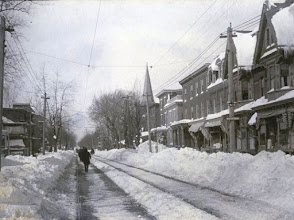Winter '18 / '19 - Arctic Oscillation (AO) Analog Verification
The analog forecasting technique seeks associations to the AO state in the run-up to the coming winter with AO run-up states of past winters. Presented here is the verification of AO analogs for the '18 /'19 winter.
The NEWxSFC method ranks analog years by their the sum of square errors (SSE) statistic.
Lower SSE errors ==> stronger analog
Constraining the number of analog winters for analysis to five is arbitrary.
In the run-up to Winter '18 / '19 ... '55 / '56 was the leading analog followed by '64 / '65 ... '84 / '85 ... '99 / '00 ... and '91 / '92. Observed AO values for Winter '18 / '19 began neutral in DEC ... turned weakly negative in JAN ... then surged positive at meteorological winter/s end and into MAR.
A quantitative assessment of the other '84 / '85 teleconnections ... not so much.
Winter '84 / '85
ENSO: -1.0
SOI: 0.6
NAO: -0.7
PDO: 0.64
QBO: -1.44
Winter '18 / '19
ENSO: 0.8
SOI: -1.6
NAO: 0.5
PDO: -0.26
QBO: 0.88
CONCLUSION: The 3rd ranked analog provided useful guidance for AO/s variability for Winter '18 / '19; however ... the two winters were notably different as evidenced by their diametrically opposed teleconnection values.
---
An alternative forecasting technique looks at the AO/s 'sign' (i.e., positive or negative) for any calendar-year's month preceding the upcoming winter as a potential leading indicator of the AO/s sign for D-J-F period.
Results from a chi-square 'test for independence' infers a statistically significant relationship ... at the 95% confidence level and a p-value < 0.05 ... between NOV/s AO sign and AO/s sign of the upcoming D-J-F period.
IOW ... if NOV/s AO is negative (positive) ... then the average AO state during the upcoming winter will also be negative (positive); although the classification model is stronger ... i.e., lower false alarm rate ... for the predictor's month with negative signs than positive. This is opposite of the relationship found for the NAO.
BOTTOM LINE: If NOV/s AO is negative ... chances are good (> 70%) the AO state will average negative during the D-J-F period.
The NOV '18 AO was -1.116.
AO for the D-J-F period averaged 0.182.
The 2x2 contingency table technique failed to predict the average AO state for Winter '18 / '19.


























No comments:
Post a Comment